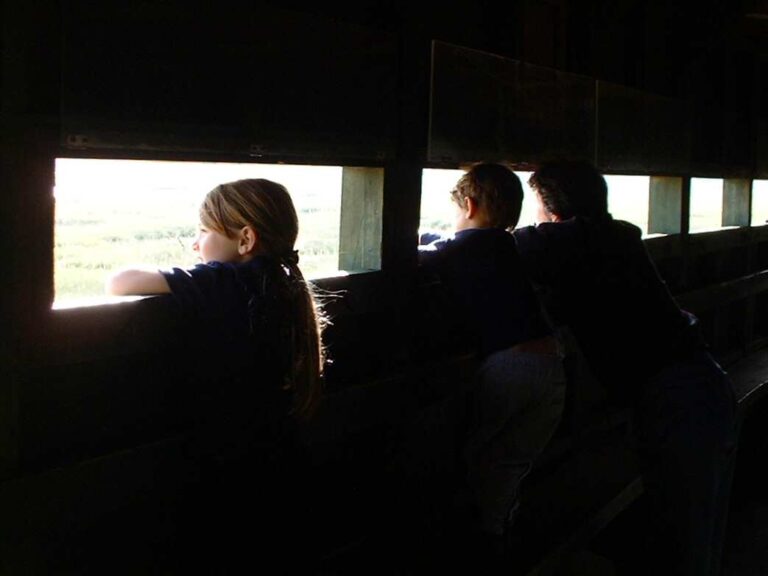Do All Baby Birds Survive In Nests? [ANSWERED! + FAQs]
We’re reader-supported; we may earn a commission from links in this article.
Maybe you’ve seen baby birds around your area and can’t help but wonder this: “do all baby birds survive in their nests?”. For the longest time, I couldn’t find any answers, so I did my own research to find my own! Here’s what I found:
Not all baby birds survive in their nests. The average overall nesting survival rate of baby birds is only about 56% but this can range between 46% and 73% for most birds. Birds of prey like Red-Tailed Hawks have high nesting survival rates of 88.9% but smaller songbirds like House Sparrows have only 11.6%.
It definitely is sad to know that many baby birds do not make it to adulthood. If you read on, I’ll share more details of which period of nesting the baby birds seem to die off, and some reasons why some species have a lower survival rate than others. Read on!
Baby Bird Nesting Survival Rates – An Analysis on NestWatch Data
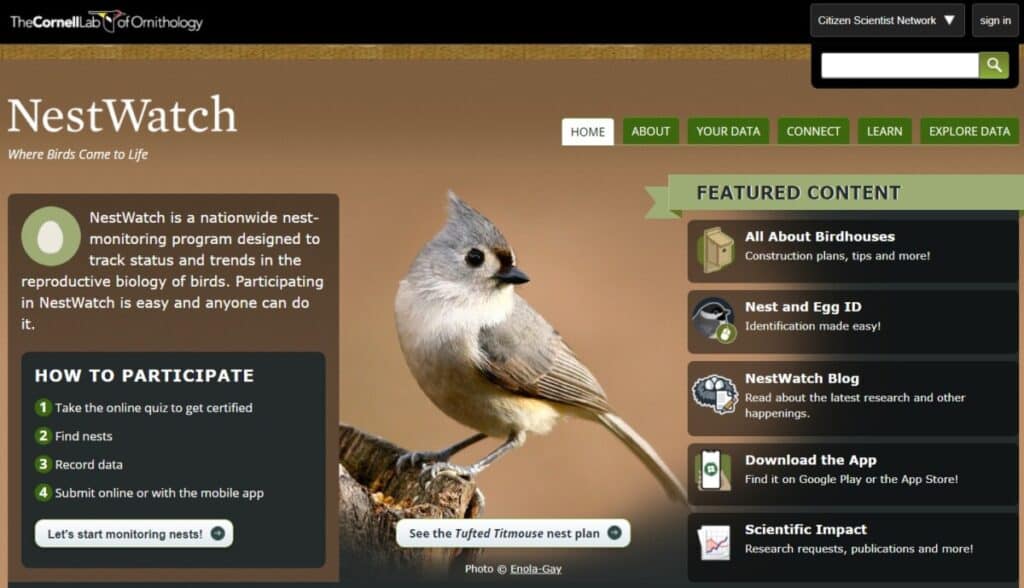
I’ll admit it: I am a naturally curious guy and birds intrigue me!
One day, I wondered: “do all baby birds survive?” Given that there always seem to be predators around and nests are always exposed to the outdoors, what is a good estimate of baby bird survival rates?
I wanted to find it out for myself!
While looking for resources online, I found some data available on Project NestWatch collected by voluntary participants about the nesting success and survival rates of baby birds!
Here’s the answer again:
Not all baby birds survive in their nests. The average overall nesting survival rate of baby birds is only about 56% but this can range between 46% and 73% for most birds. Birds of prey like Red-Tailed Hawks have high nesting survival rates of 88.9% but smaller songbirds like House Sparrows have only 11.6%.
Here’s an INTERACTIVE graphing tool you can use to look at the data:
P.S. I’m so happy to know that the data analytics skills I have in Python & biology work well for this blog post!
How to use the tool: You can start by picking a species to watch the egg survival rate, nestling survival rate, and overall nesting survival rates change accordingly!
Below, you can also have a look and mouse over to observe the comparison of overall nesting survival rates of common birds.
The egg survival rate represents the percentage of eggs laid make it to nestlings.
The nestling survival rate represents the percentage of nestlings that make it to fledglings. The overall nestling survival rate represents the percentage of eggs that make it to fledglings.
Confused? Here’s an illustration to help you understand the metrics:
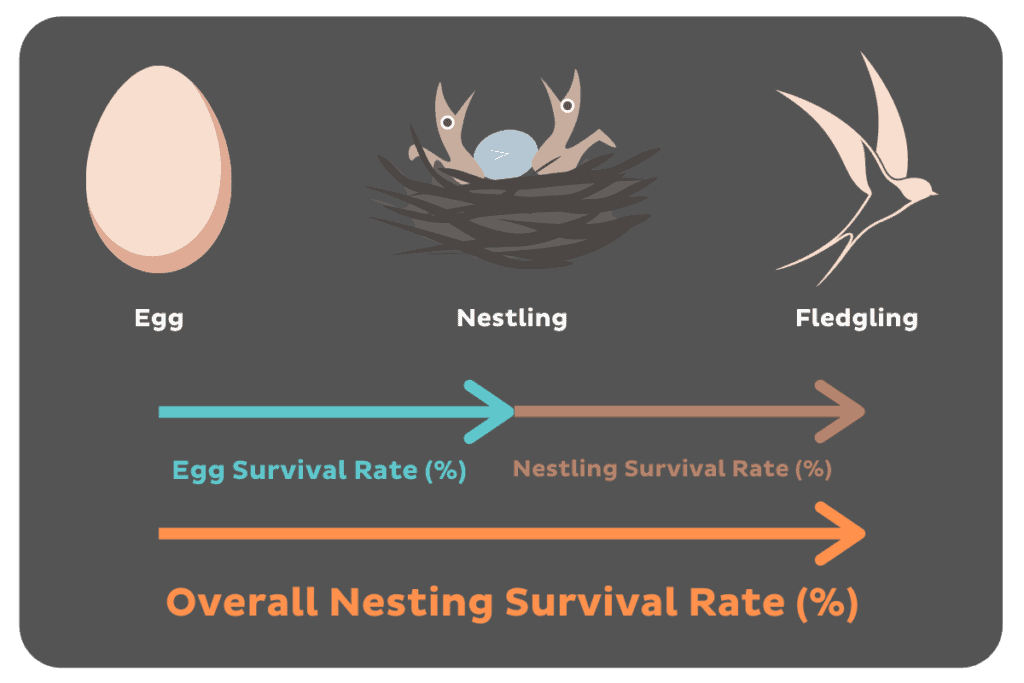
Apparently, not all baby birds survive. In fact, the average overall nesting survival rate is only 56.3%! That’s only a little over half of the baby birds surviving! Let’s dive deeper.
Interestingly, when we look deeper at the egg survival rates and nestling survival rates, we can see that nestlings (75.1%) survive only slightly better than eggs (71.8%).
However, this makes a lot of sense given that eggs are less likely to survive than nestlings because they need to be constantly incubated if not they would not hatch at all.
You might be thinking: “Wait, why is the overall nesting survival rate much lower than the other 2 survival rates?”
Well, this is because the baby birds need to be able to survive to become a nestling AND a fledgling. This means that if a baby bird dies at either stage, it will not survive to become a fledgling.
Egg Survival Rates
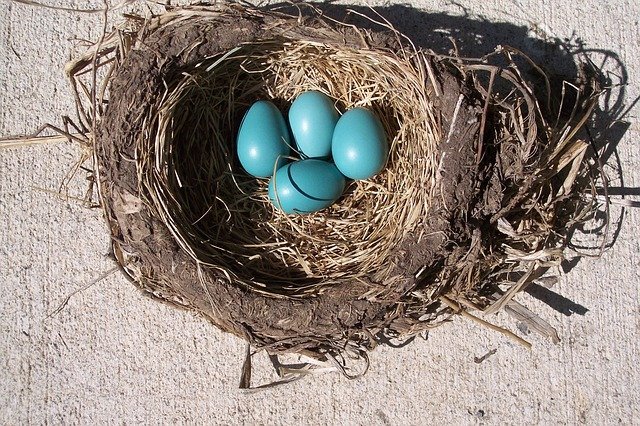
The egg survival rate represents the percentage of eggs that successfully become nestlings.
The average egg survival rate of birds is 71.8%, but most fall within the range of 65.4% – 83.5%, depending on the bird species and other conditions such as nest location and the presence of predators.
Nestling Survival Rates
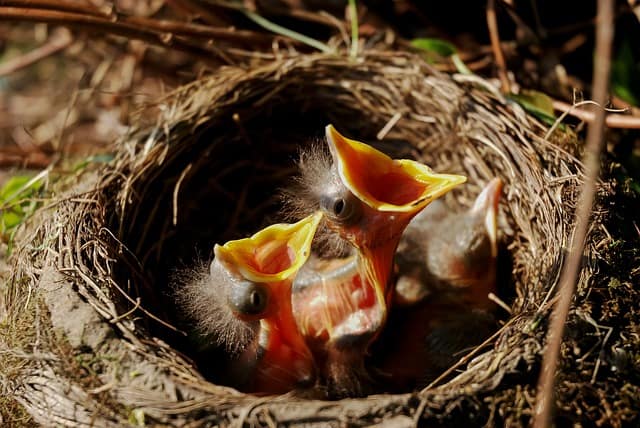
The nestling survival rate represents the percentage of nestlings that successfully become fledglings.
The average nestling survival rate of birds is 75.1%, but most fall within the range of 68.8% – 91.9%, depending on the bird species and other conditions such as nest location and the presence of predators.
Baby Bird Nesting Survival Rates: Variation Among Species
Looking at the average nesting survival rate is just one part of the question. I wanted to learn more about the nesting survival rates of individual species!
When looking through the data, I noticed that some birds have a lot higher nesting survival rate than others.
Here’s a table of some examples of common birds:
| Species | Overall Nesting Survival Rate (%) |
| Red-tailed Hawk | 88.9 |
| Ash-throated Flycatcher | 71.0 |
| American Kestrel | 66.5 |
| Eastern Bluebird | 66.0 |
| Mountain Bluebird | 63.2 |
| Carolina Wren | 59.6 |
| Tufted Titmouse | 53.4 |
| House Finch | 46.4 |
| Northern Mockingbird | 39.1 |
| Northern Cardinal | 28.3 |
| House Sparrow | 11.6 |
From the table above, we can clearly see that some birds have a much lower survival rate than others.
This can be affected by certain factors which cause baby bird deaths, which I will go through in more detail later!
Baby Bird Nesting Survival Rates: Variation Among Different Climates
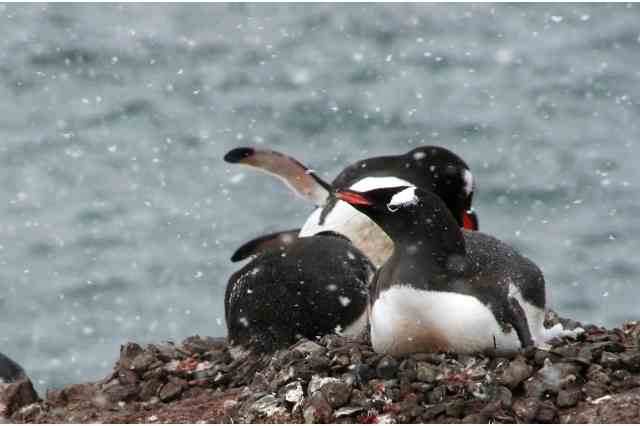
In a study of different regions and climates, scientists discovered that the survival rates of baby birds also vary accordingly. [2]
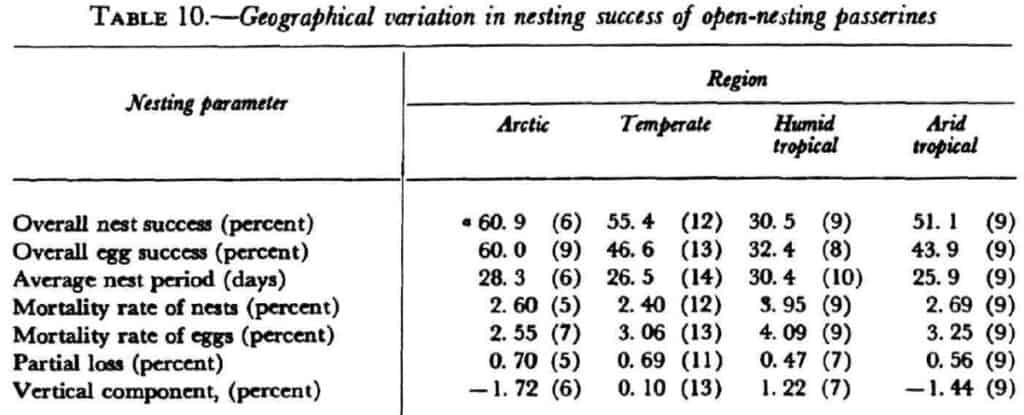
Here’s what I found and summarized in their studies:
Birds that the highest overall nest success and overall egg success are those in the Arctic, followed by Temperate climates, Arid Tropical climates, and Humid Tropical climates in decreasing order. However, mortality rates of eggs and nests are the highest in Temperate climates and lowest in Arctic climates.
Do Baby Birds Die In Their Nests?
You’ve seen the survival rates of baby birds and the stark difference between some common birds. The question now is: Do baby birds die in their nests?
Baby birds do die in their nests. The average mortality rate of baby birds in nests is 44.7%. In fact, 29.2% of bird eggs die before hatching, and 24.9% of nestlings die before becoming a fledgling. There are a number of reasons why birds die in their nests and this varies among different bird species.
Here’s a video showing how birds react to baby birds dying in their nest. It’s a sad but rare recording:
Why Do Baby Birds Die In Their Nests?
We’ve seen that a large proportion of baby birds do indeed die in their nest, but now let’s explore why. Baby birds can die in their nests due to a number of reasons:
1. Extreme Weather Conditions
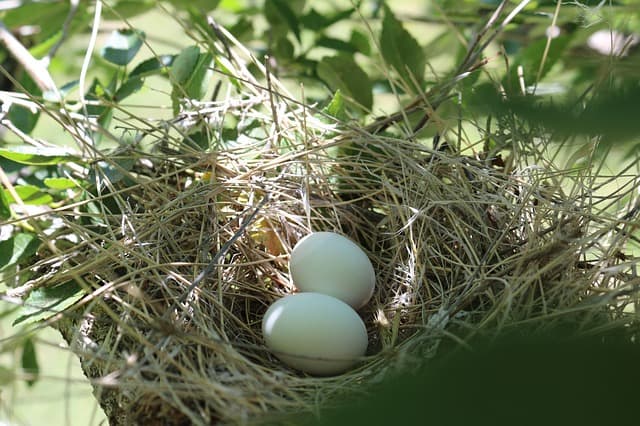
During extreme weather conditions such as storms, nests that are improperly built and secured will be shaken by the winds and rain.
Baby birds or eggs in these nests can either die by falling out of the nests or the whole nest may fall from the tree altogether.
Most of the time, these nests are built by inexperienced bird parents which will later learn to build more stable nests to withstand stormy days.
2. Dehydration/Starvation
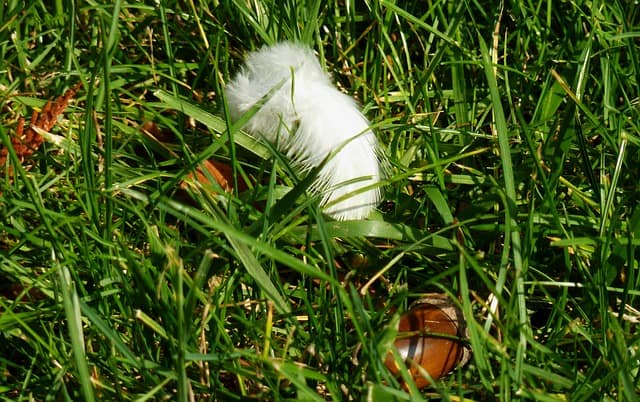
Baby birds can die from dehydration and starvation if parent birds do not feed their young enough.
If the hatch timings of the eggs in the clutch are not the same, some baby birds will grow faster than the others, attracting more attention from their parents to get fed more and grow faster.
Those that hatch later will grow slower and if the nutrition isn’t enough, they will eventually die of dehydration or starvation.
Baby birds do not drink directly from any water sources, but rather they receive their water indirectly from food sources brought by their parents such as live insects.
They require sufficient water in their diet in order to survive. Otherwise, they will die from dehydration.
If somehow, parent birds are not able to hunt effectively and feed their young, they will also die from dehydration or starvation.
3. Diseases
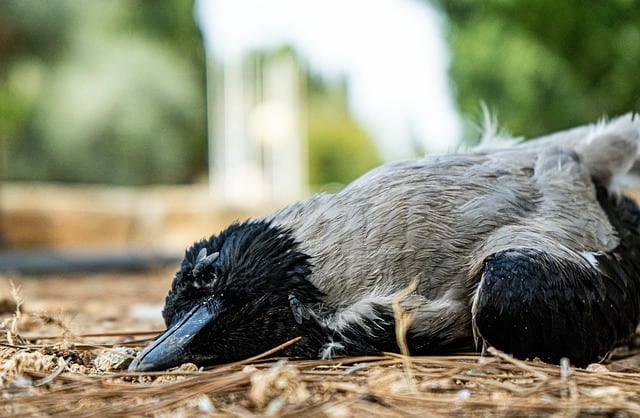
Diseases are one of the common killers of birds in a nest. Examples of diseases that can kill baby birds in a nest include the following:
- Salmonella (Bacteria)
- Trichomoniasis (Protozoa)
- Aspergillosis (Fungus)
- Avian pox (Virus)
- Bird Mites and Lice
When a baby bird suffers from any of these diseases, it will most likely spread within the nest and kill off others too. This happens naturally and there is nothing we can do about it.
It is up to the parent birds to make sure the nest is clean and disease-free by removing the baby birds’ fecal sacs efficiently.
4. Freezing/Overheating
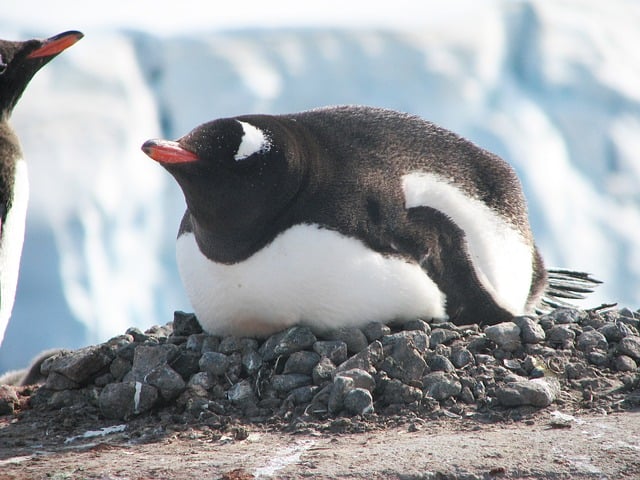
Eggs and nestlings can freeze and die when they are not incubated enough by their parents.
Birds need to sit on their eggs or nestlings and expose their brood patch to them to give them the warmth that they need.
Eggs need to be warmed up to even hatch, and nestlings need to be warmed up because they have no feathers to keep them warm when they hatch yet.
In a climate where the heat is overbearing, excessively incubating eggs or leaving the nest in an area with lots of sun can cause their eggs to overheat and not hatch.
In fact, due to global climate change, birds have begun to nest earlier and earlier to avoid the heat.
Scientists have discovered that birds that nested at cooler ends of their range resulted in a higher nesting survival rate compared to the warmer edges! [1]
5. Brood Parasites
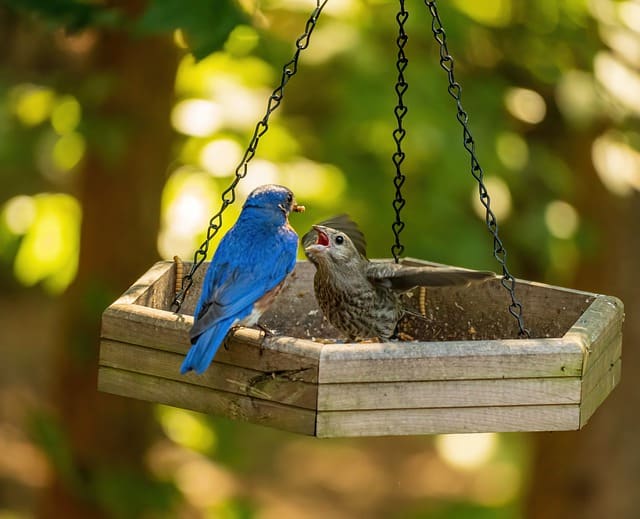
Have you heard of a brood parasite? If you haven’t, then here’s an explanation: Brood parasites are organisms that rely on other species to raise their young.
Examples of brood parasites are Cowbirds and Cuckoos.
These species secretly lay their eggs in the nests of unsuspecting birds because they have no brood patches for incubating their own young.
The foster parent then spends effort to raise the young, oblivious to the brood parasite eggs and nestlings in their nest!
What actually kills the eggs and nestlings in the nest is the competition. Brood parasites can hatch earlier than host eggs, grow faster than host nestlings, and even push host eggs out of the nest!
Here’s a video to clearly explain how they work. Watch all the way to the end!
6. Predation
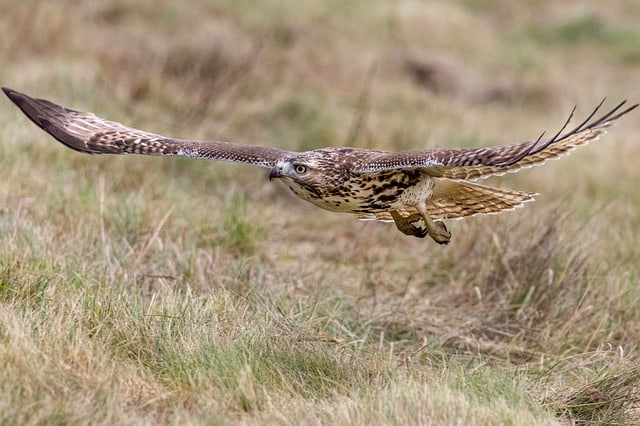
After facing so much difficulty in growing up as baby birds, they still face the dangers of predation.
If nests are not well hidden or guarded, predators can come along and eat up all the eggs or nestlings in the nest.
Here are some examples of predators that can kill baby birds in the nest.
- Foxes
- Birds of prey
- Corvids and Jays
- Rats
- Snakes
- Lizards
- Raccoons
- Skunks
Here’s a video of how nest predation happens:
7. Sibling Rivalry
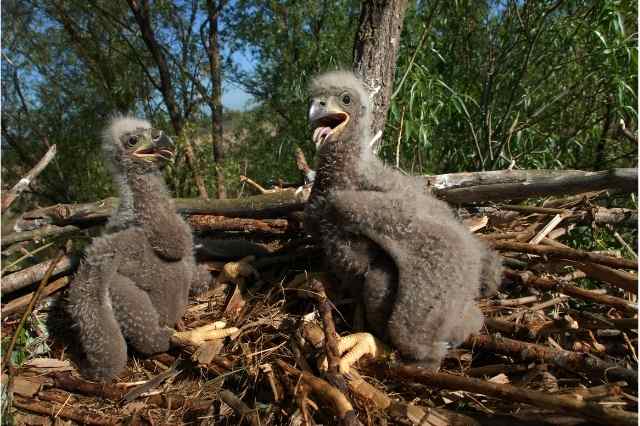
Among some larger bird species, there is a strong sense of sibling rivalry that is innate in baby birds.
Parent birds find it difficult to keep feeding more than one or two chicks due to the size that they can grow up to. So, baby bird siblings take it up to themselves to fight for survival.
These baby birds will bully, pressure, and eventually kill the weakest and youngest of the clutch in order to survive.
This is the cause of death that is necessary and common for the survival of baby birds.
Examples of such species are birds of prey and some other large birds such as cranes.
Here’s a video to demonstrate this intense phenomenon:
8. Competition With Other Bird Species
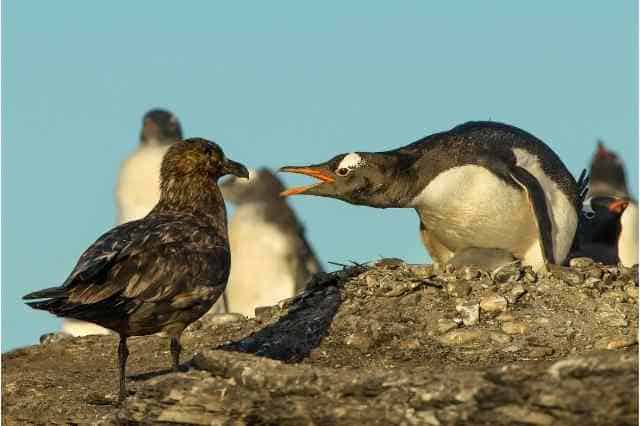
There can be lots of competition among the different bird species. Birds will purposefully attack the eggs and nestlings of other species for a nesting spot.
This can be seen especially in cavity-nesting birds, where the availability of natural cavities is scarce.
If parent birds are not around to defend their nests, their eggs and nestlings could easily be emptied out and killed.
Here’s a video illustrating how an owlet pair adapted and coped with other species fighting for their nesting spot:
Do Baby Birds Die Easily?
Baby birds do die easily. On average, 44.7% of baby birds die in their nests. They are defenseless as eggs and nestlings while in their nest and they die easily due to extreme weather conditions, extreme temperatures, brood parasites, predation, and fierce competition from other bird species.
Will Mother Birds Remove Dead Babies From Their Nests?
Mother birds will remove dead baby birds from their nests when they see that they no longer respond to them. They will remove dead baby birds before they begin to decompose and start spreading any diseases that can further harm other birds in the nest.
Here’s a video of this happening in a nest box of Blue Tits:
Final Thoughts
Now we all know how hard baby birds fight to survive in this harsh natural world. Let’s all appreciate all the birds around us: the ones that fought hard to survive!
I hope this analysis and study have been useful and informative for you. Thanks to all participants who contributed to Project NestWatch and the collection of the data used in this article!
Thank you for reading and happy birding!
References
[1]Socolar, J.B., P.N. Epanchin, S.R. Beissinger, and M.W. Tingley. 2017. Phenological shifts conserve thermal niches in North American birds and reshape expectations for climate-driven range shifts. Proceedings of the National Academy of Sciences: doi: 10.1073/pnas.1705897114.
[2] Ricklefs, R. E. 1969. An analysis of nesting mortality in birds. Smithsonian contributions to zoology.
My Recommended Birding Resources:
Hey there, Justin here!
Here’s a list of all my favorite resources, products, and brands I trust and love.
My Celestron Nature DX 8×42 Binoculars: It’s a great budget pair for beginner birders. Highly valued for its price! Read my review.
Safe Paint for Bird Baths Guide: Learn about non-toxic paint for painting bird baths.
Safe Sealers for Bird Baths Guide: Learn which sealers are safe for bird baths.
Safe Paint for Bird Feeders Guide: Learn what special care needs to be taken to paint bird feeders with the right paint.
Safe Paint for Birdhouses Guide: Learn about non-toxic paint for painting birdhouses. (Not the same as bird baths!)
Bird Identification Apps Guide: 2 of my favorite birding apps are Merlin Bird ID, and eBird Mobile! Merlin is great for tracking and identifying birds, and eBird Mobile is great for tracking the birds sighted when birding.
Check out my resources page for the full list of resources I recommend!

Justin Chia
Justin is the founder and author of Birding Outdoors. He is a Nanyang Technological University (NTU) alumnus with a Bachelor of Biological Sciences and a former data analyst.
Now, Justin runs the Birding Outdoors blog full-time, hoping to share his deep love for birds, birding, and nature with others.
To unwind, Justin enjoys gaming and reading.

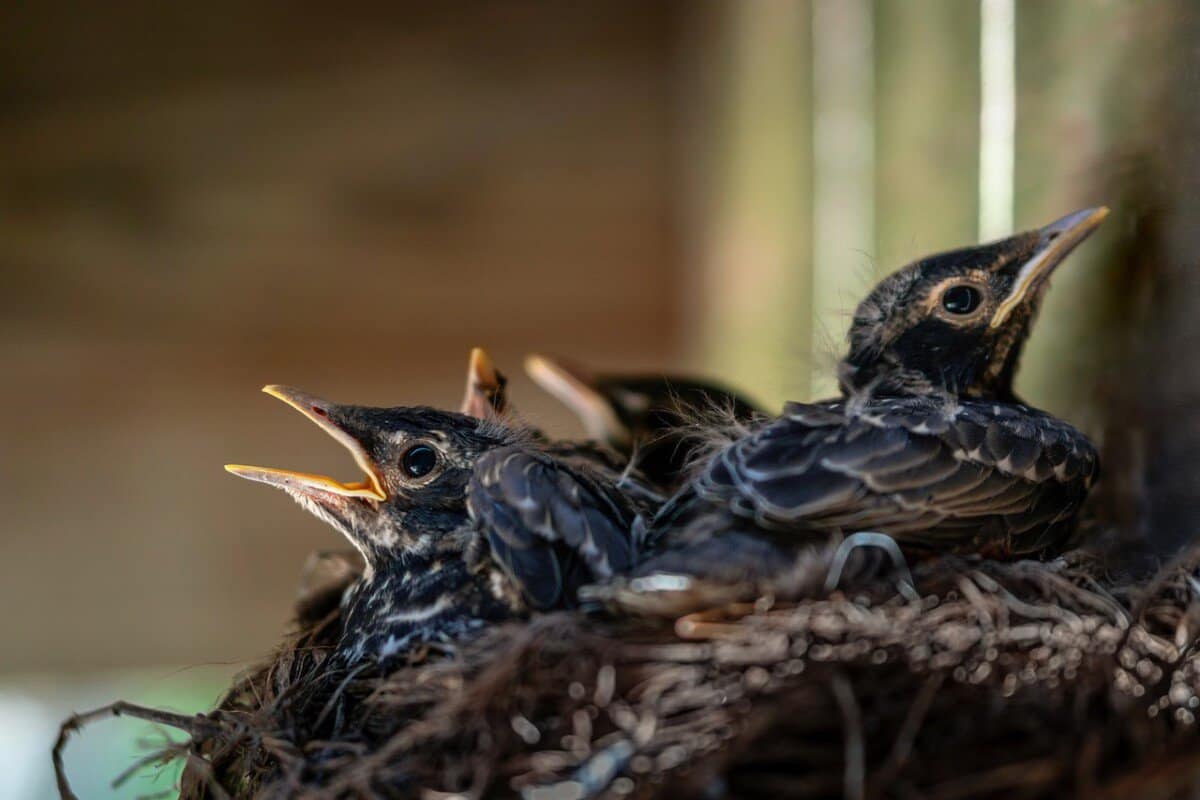
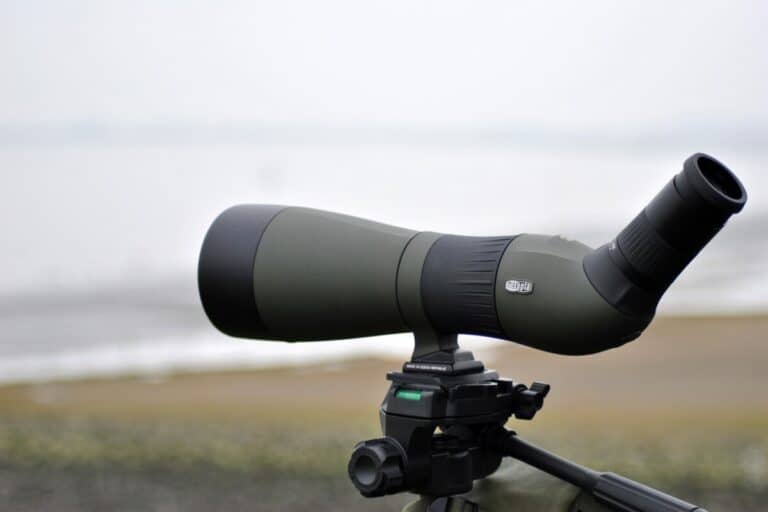
![Why Do Some Birds Fly SO High? [ANSWERED! + FAQs]](https://birdingoutdoors.com/wp-content/uploads/2021/06/birds-flying-at-diff-heights-6-768x512.jpg)

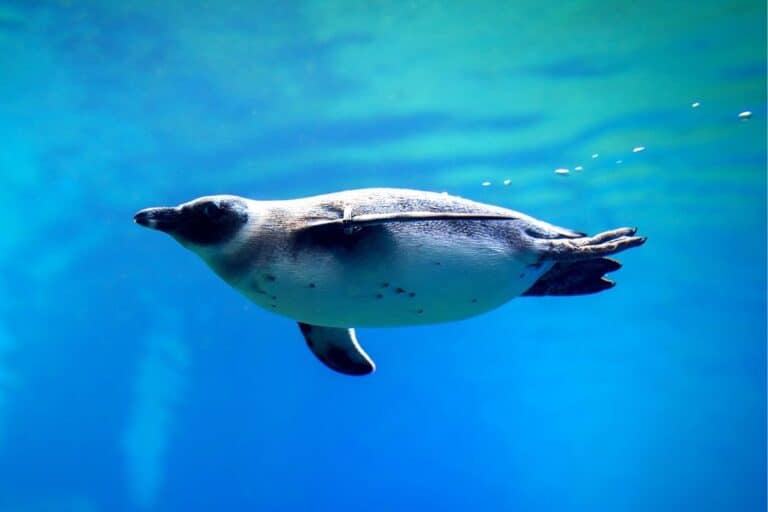
![Why Are Birds So Jerky? [ANSWERED!]](https://birdingoutdoors.com/wp-content/uploads/2020/10/cardinal-3903642_1920-768x512.jpg)
